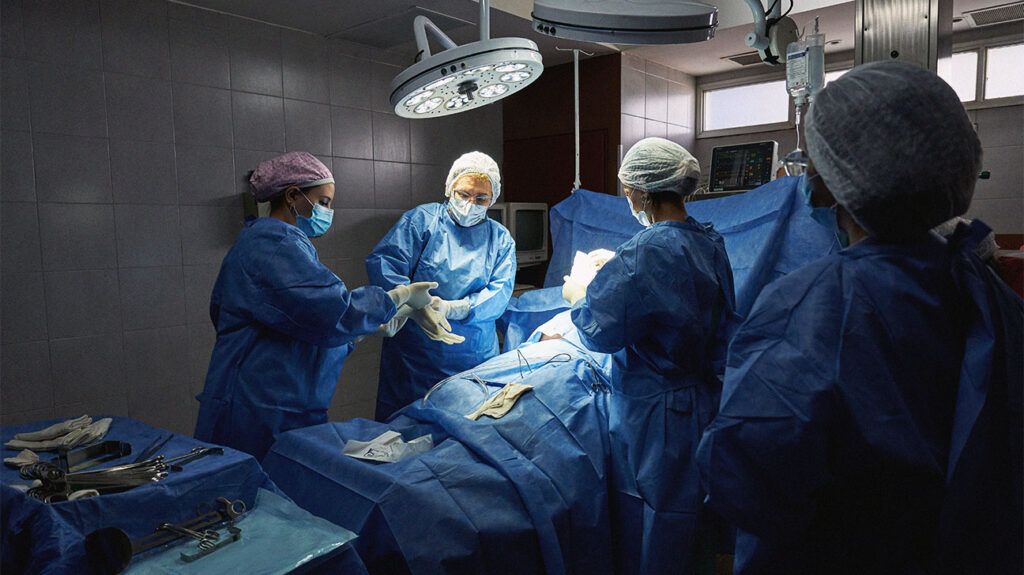Cholecystitis is inflammation of the gallbladder. It usually occurs due to a bile duct blockage. Surgery to remove the gallbladder is the main treatment, but other options can help reduce pain and relieve symptoms.
The gallbladder is an organ that stores and releases bile, a substance the liver produces to help break down fats from food. It releases these into the digestive system through bile ducts.
Blockage of the bile ducts can occur due to gallstones, which are a solid buildup of cholesterol, a waxy substance in the blood. Biliary sludge can also lead to blockages. Biliary sludge is a liquid made of cholesterol and salt crystals that the liver produces to help digest fat. Blockages cause bile to back up, increasing pressure in the gallbladder.
Cholecystitis does not always cause symptoms. However, if it does, serious complications can occur.
This article explores different treatments for cholecystitis and when to see a doctor. It also answers some common questions about cholecystitis.

Initial treatment for acute cholecystitis often requires admission to the hospital so a doctor can monitor recovery.
According to the United Kingdom’s National Health Service (NHS), this may involve:
- Monitored fasting: A doctor may suggest that a person does not eat or drink for a short time to help relieve pressure on the gallbladder.
- Fluids: An individual may receive intravenous (IV) fluids to reduce the risk of dehydration from fasting.
- Pain relief medications: These may help improve comfort during the hospital stay.
- Antibiotics: If a doctor suspects a gallbladder infection, they may prescribe antibiotics.
A hospital stay may be for up to a week. However, a person might be able to return home earlier depending on their progress.
Side effects and risks
The risks of initial treatment are low. In-hospital monitoring reduces the risk of adverse effects. For example, fasting for a
People may also have mixed responses to medication. For example, the NHS highlights that antibiotics and nonsteroidal anti-inflammatory drugs (NSAIDs), may cause side effects, such as diarrhea and nausea.
A cholecystectomy involves a surgeon treating cholecystitis by removing the gallbladder. It is one of the
The gallbladder fulfills a vital role in the body, but a person can function well without it. After the procedure, bile flows directly from the liver to other digestive organs, instead of traveling to the gallbladder for storage.
There are two different types of cholecystectomy:
- Laparoscopic cholecystectomy: Most surgeons perform this type of gallbladder removal. It is
minimally invasive , meaning a surgeon does not make a large cut. They perform it while an individual is under anesthesia, and people can often return home on the day of the operation. A return to normal activity within 7 days is possible. - Open cholecystectomy: This involves making a larger surgical cut. A surgeon will usually only perform an open procedure if complications occur during a laparoscopic cholecystectomy. People usually need to stay in the hospital for
around 2 to 6 days after the procedure. They can often return to normal activity in about a month.
Side effects and risks
After a cholecystectomy, an individual may experience changes in their bowel movements. These changes are not permanent, but people should discuss any effects of the surgery with a doctor.
Gallbladder surgery complications are extremely rare. However, the procedure sometimes injures the bile ducts. This may lead to infections and further bile duct repair procedures.
An ERCP is a nonsurgical procedure for cholecystitis. Doctors may use ERCP to
However, nonsurgical procedures are usually only suitable for people who have severe underlying health problems that make surgery too risky or might cause surgical complications in the bile ducts during a cholecystectomy.
During an ERCP, a doctor administers a sedative to numb the throat and prevent gagging. Then, they insert a flexible tube with a lighted camera down the throat and into the stomach.
They can use the camera to look for blockages in the bile ducts and pass small instruments through the tube. These instruments can help break up and remove any gallstones, or open blocked ducts, which may involve inserting a stent to hold the duct open.
Side effects and risks
Very rarely, an ERCP may cause the following complications:
- bile duct or gallbladder infections
- excessive bleeding
- pancreatitis
- bile duct tearing
A doctor
People who undergo oral dissolution therapy might need to take the medications for months or even years, and the treatment may be lifelong.
Side effects and risks
Ursodiol and chenodiol may cause a range of side effects, including nausea and changes in bowel habits, including diarrhea.
They may not be suitable for people who are nursing.
The NHS recommends seeking medical attention for sudden abdominal pain, particularly if it lasts several hours or occurs alongside other symptoms, such as:
- nausea
- vomiting
- fever
- a bulge in the abdomen
- sweating
- a loss of appetite
- jaundice
Below are some common questions and answers about cholecystitis.
Is cholecystitis an emergency?
Acute cholecystitis
People should seek medical attention if they experience any symptoms of cholecystitis. Prompt treatment can help prevent complications, such as a gallbladder rupture.
Can acute cholecystitis resolve on its own?
Acute cholecystitis requires prompt treatment. Not treating cholecystitis risks potentially life threatening complications.
Can doctors treat chronic cholecystitis without surgery?
Nonsurgical treatments for cholecystitis are available, usually for people who
Treating cholecystitis usually involves surgery to remove the gallbladder. An individual will undergo initial treatment in the hospital, which may involve supervised fasting, pain relievers, and IV therapy.
Nonsurgical treatments, such as endoscopic retrograde cholangiopancreatography (ERCP) and oral dissolution therapy are available for people who cannot tolerate a cholecystectomy.
People should contact a healthcare professional if they experience any symptoms of cholecystitis.
